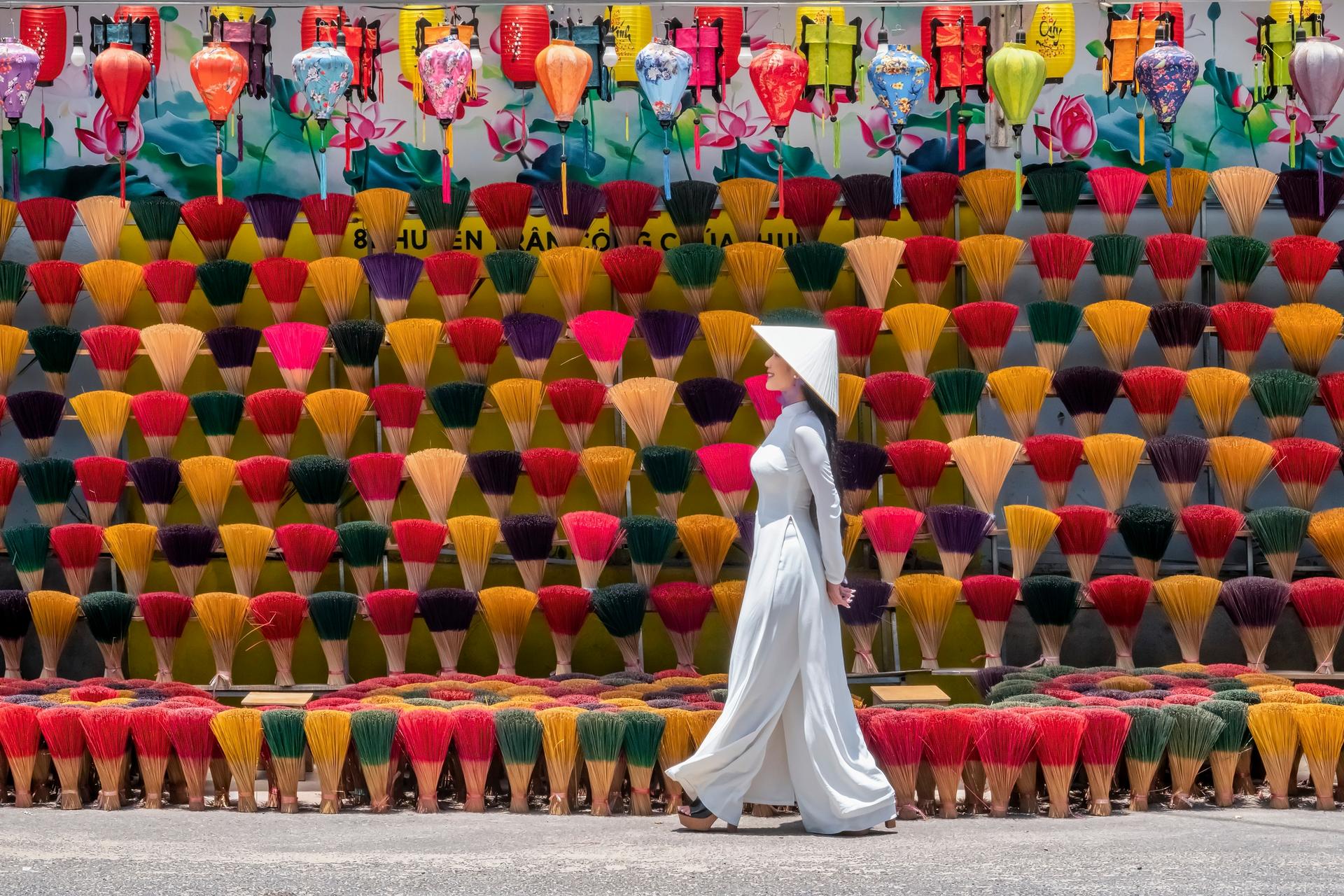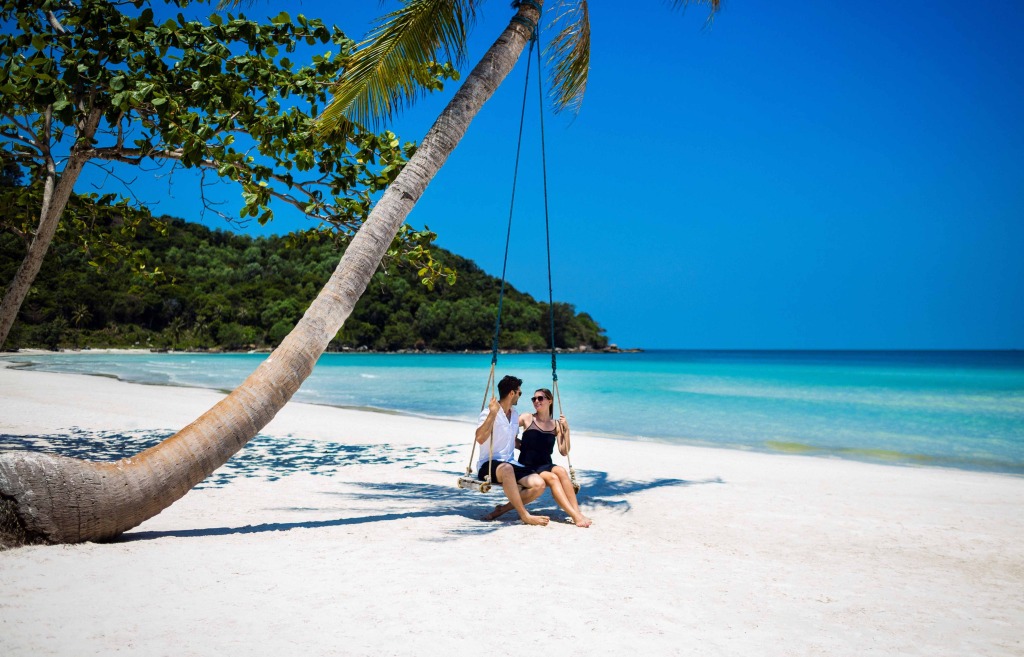Vietnam Culture Clothes: What to Wear and How to Dress Properly When Visiting Vietnam

Vietnam Culture Clothes: What to Wear and How to Dress Properly When Visiting Vietnam
Contents
When traveling to any country abroad, understanding its dress custom is an integral aspect of cultural respect and physical comfort. Vietnam is no exception. With a variety of climates and a strong cultural background, understanding what to wear in Vietnam depending on the region, time of the year, and type of activity will make international guests feel confident and culturally aware.
In this guide, Aravinda Travel shares essential tips on Vietnam culture clothes — what to pack, what to avoid, and how to dress appropriately in different situations.
Seasonal Guide to Dressing in Vietnam
Vietnam’s geography spans both temperate and tropical zones, creating distinct seasonal changes between North and South:
- Northern Vietnam has four seasons: Spring, Summer, Autumn, and Winter.
- Southern Vietnam experiences two main seasons: dry and rainy.
Hot Season (Summer in the North / Dry Season in the South)
Temperatures can rise significantly, especially between May and August. Light, airy, and breathable fabrics like cotton or linen are recommended. Choose short-sleeved T-shirts, blouses, and shorts in light or pastel colors to reduce heat absorption and stay cool.
Tip: Avoid synthetic fabrics that trap heat and cause discomfort.

Cold Season (Winter in the North: November–February)
If you are visiting Northern Vietnam during winter, prepare for the chill. Carry thermal or woolen inner garments, thick trousers, and warm outer garments like padded jackets or fleece jackets. Dark colors like black, brown, or dark red keep you warm and are culturally appropriate for the season.

Rainy Season (May–October in the South)
There are frequent rains and sudden showers. Wear quick-drying fabric like polyester mixes or activewear. Carry a small umbrella or raincoat. Wear short skirts or trousers that won’t get wet and stained easily.

Dressing Modestly at Religious and Sacred Places
Temples, pagodas, and other religious sites throughout Vietnam have great religious importance. Wearing modest clothing when visiting them is a sign of respect and cultural awareness.
What to Wear
- Prefer muted or neutral colors such as cream, gray, beige, or dark colors.
- Clothes should not be too short, tight, or revealing.
- Dresses and skirts should be knee-length or below.
- Baggy long trousers and high-neck tops are most suitable for women and men.
Suggested Outfit Ideas
- Traditional Ao Dai: Elegant and modest, suitable for New Year or temple visits during festivals.
- Buddhist-style clothing: Simple, flowing robes in subdued colors, ideal for spiritual retreats or ceremonies.
- Casual combinations: Tees with loose-fitting pants or culottes, or midi skirts with long-sleeved tops.
- Dresses: Maxi dresses or A-line skirts in subdued flower patterns or solid colors are acceptable if they fall below the knee.
Avoid: Clothing with loud slogans, bright neon hues, or too much jewelry.

Dressing by Activity: What to Wear for Outdoor Adventures
Vietnam’s landscape offers diverse travel activities. Dress appropriately for each to stay comfortable and agile.
Hiking and Trekking
Popular trekking sites like Sapa, Ha Giang, or Ba Na Hills require functional clothing:
- Moisture-wicking sportswear, stretchy leggings, or cargo shorts
- Quick-dry T-shirts or tank tops
- Light windbreakers for high places
- Durable hiking boots or sports shoes
Accessories: hats, sunglasses, small backpacks, and refillable water bottles.

Beach Days and Sunbathing
Beaches in Vietnam (Da Nang, Phu Quoc, Nha Trang) are stunning. When preparing for the beach:
- Swimwear or bikinis with beach cover-ups (e.g., kimono tops, mesh tops)
- Maxi dresses with halter necks or off-the-shoulder designs
- Playful beachwear: rompers, jumpsuits, or loose-fitting shorts with crop tops
- Sandals, sun hats, oversized sunglasses, and waterproof bags
Tip: Apply high-SPF sunscreen because the UV index of Vietnam is typically very high even on cloudy days.

Vietnam Travel Clothing Tips
To enhance your travel experience, bear in mind some practical tips:
- Avoid wearing precious jewelry on public transportation or in crowded places.
- Research dress codes for religious or cultural attractions in advance.
- Apply sunscreen, especially in the summer months.
- Shop locally: Vietnam offers fashionable, affordable clothing at local markets and shops. If you don’t have time to pack something, shopping after arrival is convenient.
Conclusion: Live Vietnam Culture Through Dressing
Understanding what to wear in Vietnam is a mark of cultural sensitivity and enhances your travel experience. Whether dressing in the traditional Ao Dai, hiking in the mountains, or sunbathing on a tropical island, dressing the part makes it an even more memorable experience.
Don’t merely visit Vietnam — experience it with flair, grace, and understanding.

Ready to experience Vietnam?
Aravinda Travel offers customized cultural tours, Ao Dai rental experiences, and authentic travel experiences across Vietnam. Book your cultural tour with us today!
Contact Details:
- Website: aravindatravel.com
- Facebook: Aravinda Travel – Loyal DMC in South East Asia
- Email: [email protected]
- 24/7 Hotline: +84 989 383 572





